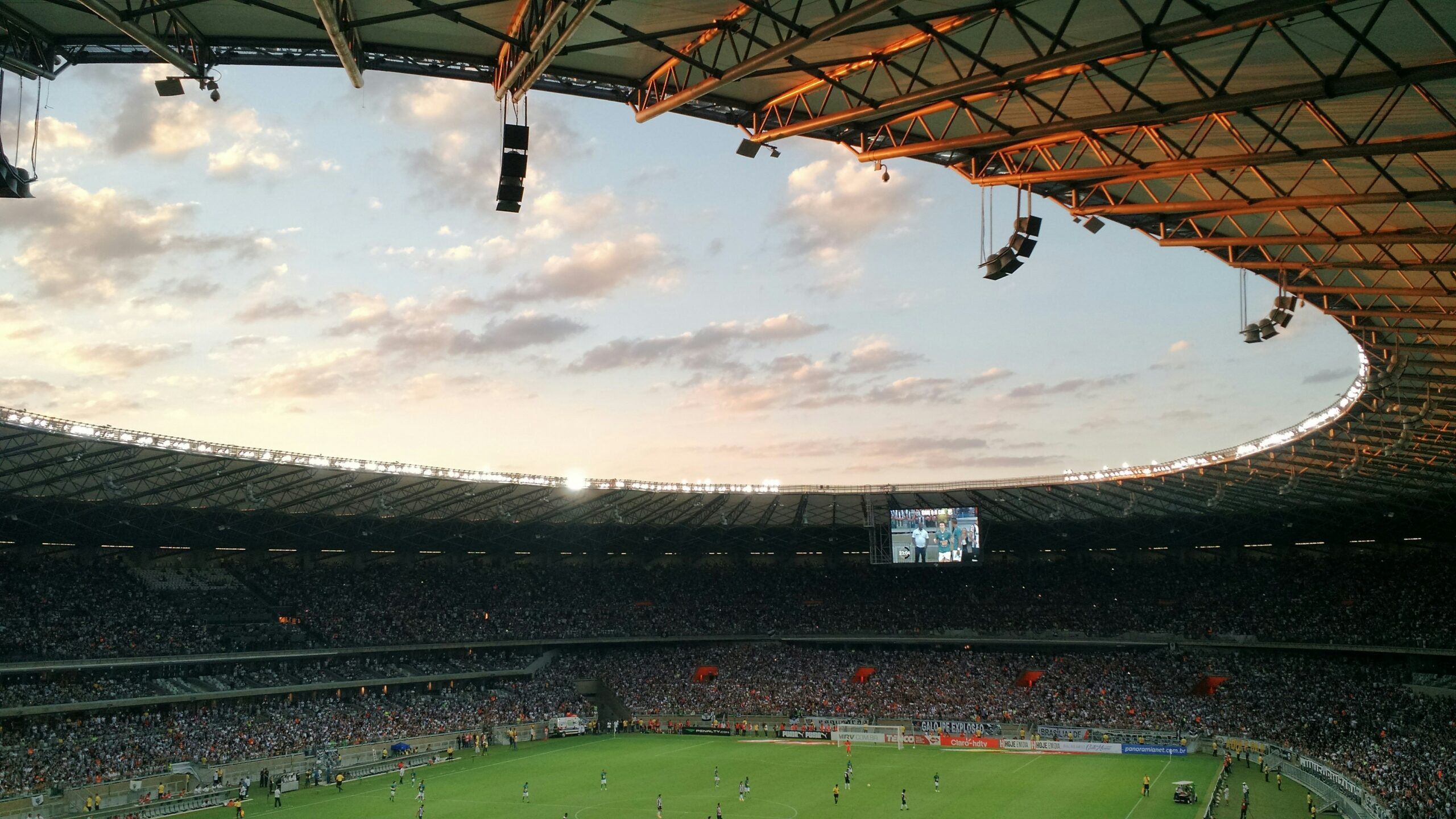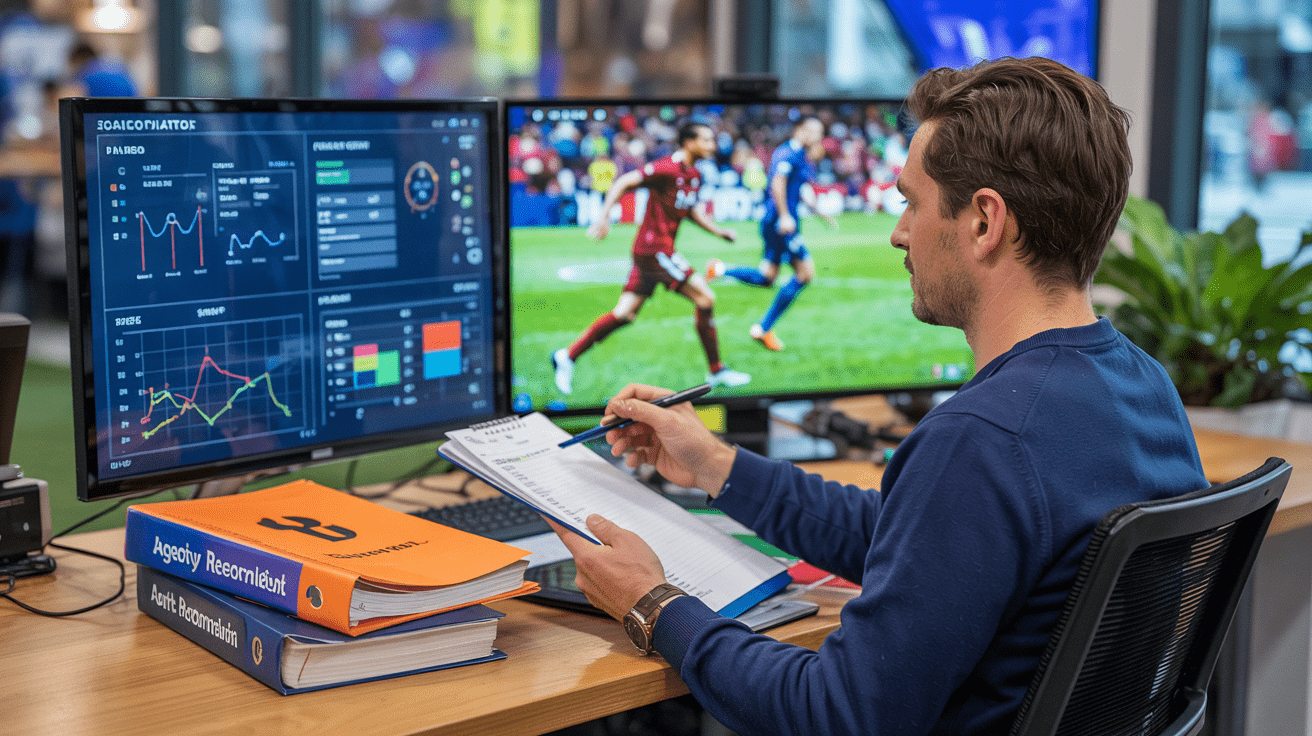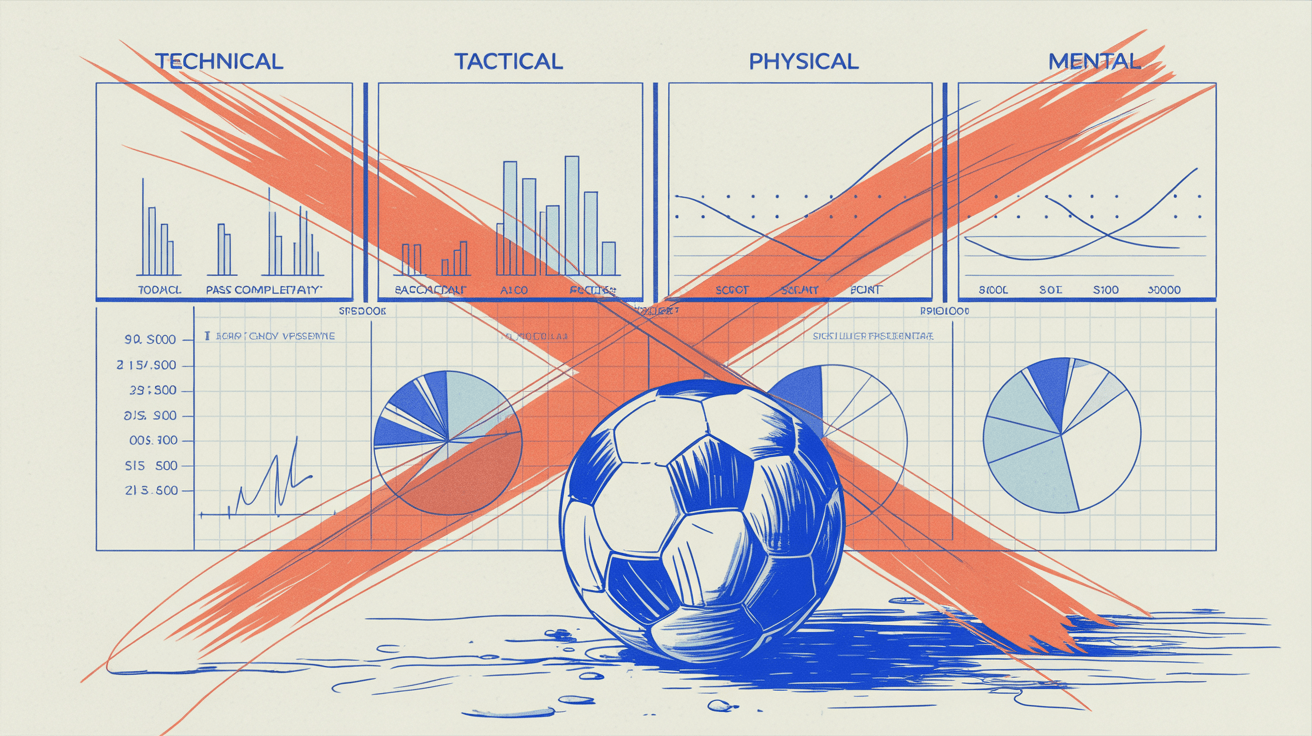Imagine performing an action such as crossing the street, throwing a ball or zipping coffee. All of those actions can be split into four time-space characteristics: position, moment, direction and speed. The same applies to every football action performed on the pitch. By using those four characteristics, you can understand and explain football actions in way more detail.
Position, moment, direction, speed
Every football action always has a starting position. From there, at a certain moment, the football action starts. That is being done in a certain direction, and with a certain speed.
Pass
The most common example of looking at a football action from the perspective of position, moment, direction and speed is a pass.
Every pass starts at a certain location on the pitch, based on where the player who is passing is located. The player picks the moment of the pass, and passes the ball in a certain direction and with a certain speed.
Deep run
Let’s say a forward makes a deep run (see image). Let’s go into the four time-space characteristics for this deep run in more detail.

Position
The forward takes a position between both central defenders (pitch position) to create confusion about who is going to mark him or follow his deep run. He starts a few meters away from the offside line (pitch position) so he can already gain speed before his teammate releases the pass without being offside. He leans a bit forward, looks towards the goal, and puts one leg in front of the other (body position) to accelerate faster.
Moment
The forward sees that his teammate in midfield receives the ball. The midfielder turns with his face towards the goal. The ball is a bit in front of his preferred foot, and there is no pressure from any opponent close by. The midfielder looks up to explore forward passing options and makes eye contact with the forward. The forward also sees that both central defenders are not seeing him for a split second because they are looking at the ball. This is the ideal moment for him to start his run.
Direction
The ball is located a bit to the left of the pitch. If the forward is making a deep run directly towards goal, it will probably be easier for the goalkeeper to intercept. It would also make the pass more difficult for his teammate, as it’s hard to play the ball in behind there, especially for a through pass on the ground. That is why he directs his deep run into the back of the ball-side central defender.
Speed
Because of his starting position, the forward can sprint before the pass is played in behind without being offside. Therefore, he accelerates as quickly as he can. Because it seems like the pass will be a bit late, he slows down for a second before sprinting again when the ball is released. Just before his first touch, he slows down a bit to make it easier to control the ball properly.
“The deep run can – just like any other football action – be broken down to four elements: where it starts (position), when it starts (moment), where it is going towards (direction) and how fast it is executed (speed).”
Defensive action
The concept of position, moment, direction, and speed does not only apply to offensive football actions. Defensive actions consist of the same four time-space characteristics. Let’s provide another example, where Mohamed Salah is intercepting a pass from Gabriel Magalhāes, as shown in the images below.



Position
Oleksandr Zinchenko started in the left full-back position and moved towards midfield, between Liverpool’s defense and midfield. Salah doesn’t block the passing lane right away but takes Kai Havertz on the left wing into consideration too. By positioning in a split position like this (pitch position), he can keep his options open based on what Gabriel will do. He’s close enough to Gabriel to close the angle but also far enough away to give himself a bit of reaction time after the pass is released (pitch position). A split second before Gabriel seems to pass, Salah stands on his front foot and bends his knees a bit (body position).
Moment
Salah tries not to give away any information about the fact that he wants to intercept the pass to Zinchenko. He waits very long with his steps to his left. He times his defensive action so that Gabriel has already decided to make the pass. By waiting so long, Salah ensures that Gabriel won’t change his decision at the very last moment.
Direction
Salah is making well-coordinated small steps in his defensive action to intercept the pass. The direction of this football action is to the left and a bit backwards.
Speed
Once Salah starts his defensive action to intercept the pass, he executes it at a very high tempo, taking many small, well-coordinated steps to keep his balance and successfully intercept the ball instead of just blocking it.
Use framework as a scout
When you want to improve as a scout, this PMDS framework can be really helpful. If you understand each football action on the pitch in great detail, you will gain more information from every football action you watch.
Evaluating players – your job as a scout – is basically the sum of all the football actions you observe of them. So, by understanding football actions very well and watching enough football actions to create a good sample size, you are well able to evaluate a player’s level and style.



